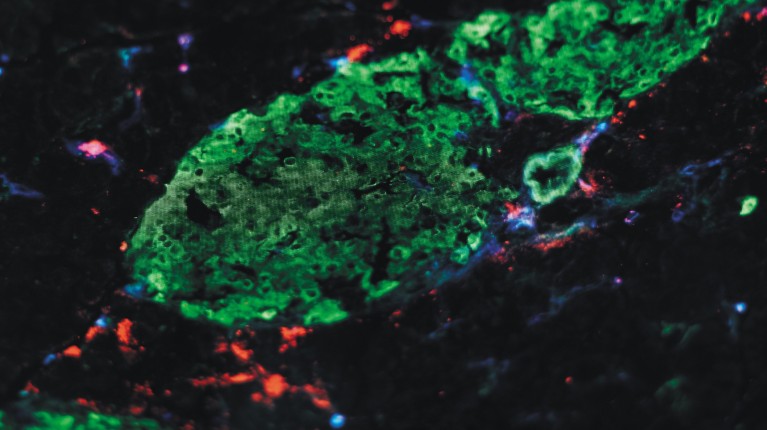
Image of the pancreas of a diabetic mouse to show autoimmune disease: Cytotoxic T cells attack the pancreatic cells.
Kouji Matsushima, as a young postdoc in the 1980s at the National Cancer Institute in the US, discovered two signalling molecules, called interleukin-8 and MCAF/MCP-1, that help attract white blood cells to infection sites. Once back in Japan, Matsushima made antibodies against different types of these ‘chemokines’ and their receptors; that eventually led to an anti-leukaemia drug.
Now, Matsushima’s lab at Tokyo University of Science’s Research Institute for Biomedical Sciences is progressing cancer immunotherapy.
Discoveries of immune regulators are almost commonplace at this institute, established in 1989 to facilitate collaborative research between biomedical scientists and companies. Its strong immunology focus is largely attributed to the leadership of Tomio Tada—director from 1995-1999—renowned for highlighting specialized cells that disarm the immune system from attacking one’s own organs.
Probing the immune systems
Immunologists at the institute continue to uncover interactions and malfunctions of various components of our immune systems to develop therapeutic strategies for challenging diseases of our times.
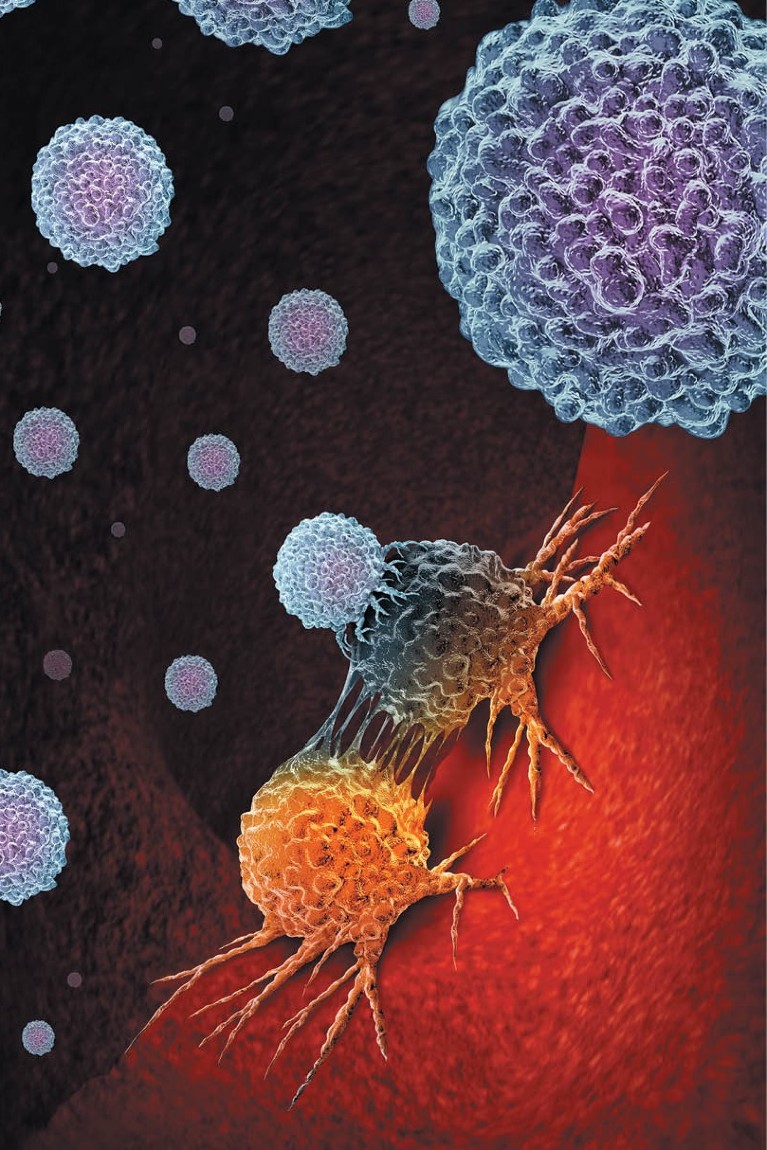
Professor Matsushima’s anti-cancer drug targets a chemokine receptor on some T cells. ©wildpixel/iStock / Getty Images Plus
For example, Matsushima’s anti-leukaemia drug, mogamulizumab, targets the chemokine receptor CCR4 expressed on some T cells, including in leukaemia. “Anti-CCR4 antibody can induce remission, but it is not a cure,” he says. To cure leukaemia, Matsushima explains, patients receive allogeneic bone marrow and stem cell transplants that sometimes lead to life-threatening graft versus host disease.
Matsushima found that an antibody that targets the CD4 protein expressed on T cells saved mice from this deadly reaction. Subsequent research by others showed that anti-CD4 antibody had a surprising anti-cancer effect on tumour-bearing mice. “I couldn’t believe it,” he says. “Why was the depletion of the CD4+ T cell population in tumour-bearing mice showing anti-tumour activity?”
Further research by Matsushima found that CD4+ T cell depletion led to the proliferation of cancer-killing T cells in tumour-bearing mice. He has since conducted promising early-stage clinical trials to test the efficacy of the anti-CD4 antibody, IT1208, against gastric, oesophageal and colorectal cancers in human patients, in combination with immune checkpoint inhibitors.

Fluorescence-activated cell sorting (FACS) is a technique to purify immune cell populations and the state of immunity.
Clues from mouse models
Immunologists often need engineered mice to clarify the functions of immune molecules. Yoichiro Iwakura has generated more than 100 lines of immune-deficient disease models by modifying immune-related genes. Over three decades, he has used these engineered mice to study rheumatoid arthritis pathogenesis and found that inflammatory cytokines such as IL-1, IL-6, IL-17 and TNF-α play important roles in this process. Recently he showed the protein CTRP6 suppresses an immune pathway and can be used to treat arthritis in mouse models. Iwakura suggests excess activation of this pathway could lead to autoimmune diseases in humans.
Iwakura has also clarified the roles of an immune receptor, dectin-1, implicated in host defence against fungal infection. Also, inhibition of its signalling in healthy individuals suppresses inflammation in the intenstine caused by irritants and allergens. Too much inhibition prevents dectin-1 from initiating an anti-fungal response when it senses beta glucans in fungal walls. Its excessive activation by beta glucans in foods or fungi can aggravate colitis. “A balance between the agonistic and antagonistic dectin-1 ligands helps control intestinal immunity,” explains Iwakura.
Key role of gut microbes
Close by, Masato Kubo’s team at the institute is investigating another molecule involved in intestinal immunity. NFIL3 is a rhythmically expressed transcription factor that is a key regulator of body metabolism. Kubo found that gut microbes regulate energy storage and body fat accumulation by controlling the amplitude of NFIL3’s circadian oscillation.
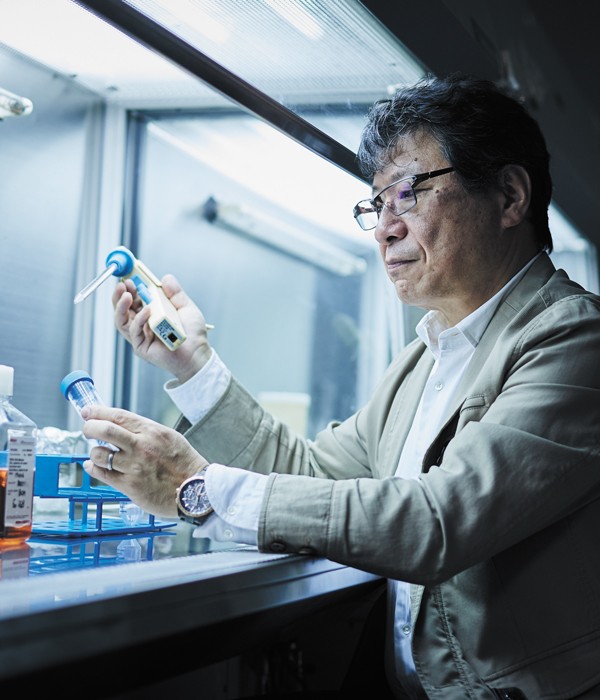
Professor Kubo shows how immune cells can be isolated and sorted.
Much of Kubo’s career has focused on immune responses against influenza infection. Recently he found that the dominant response to inactivated influenza vaccines involves type 1 T helper cells triggering the release of antibodies that can only target the type of influenza virus in the vaccine. But natural infection, including after vaccination with a live attenuated virus, leads to a dominant T follicular helper cell response that produces broadly reactive antibodies that can respond to several influenza virus strains.
If he can reveal the detailed mechanisms underlying the advantages conferred by natural infection, Kubo says it could inform innovative vaccine strategies for influenza viruses and for COVID-19.
With the spotlight on COVID-19, Iwakura is developing new mouse models to progress understanding of why some infected people develop an over-aggressive inflammatory response, known as a cytokine storm. Studying the roles of individual cytokines in the development of a cytokine storm could help determine the best anti-cytokine antibodies for treatment.
Matsushima is also building on his many years of research on the anti-alcoholism drug disulfiram for treating lung fibrosis. He hopes to investigate the drug’s anti-viral and anti-inflammatory potential for treating COVID-19.
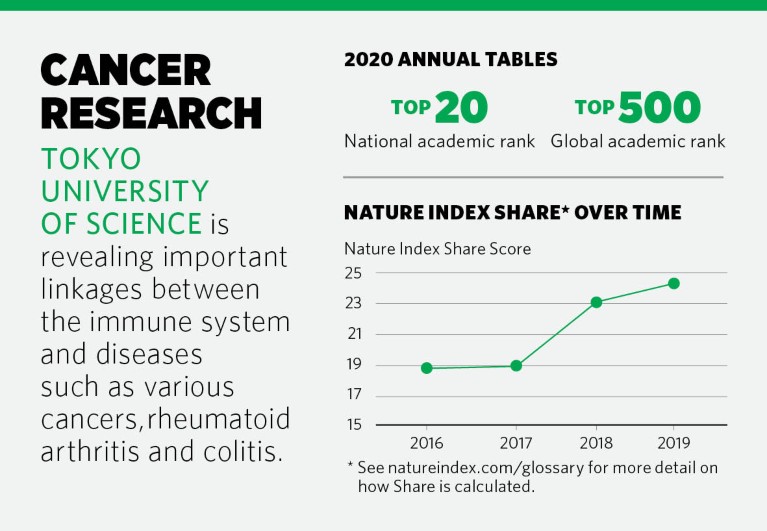
For all research outputs for Tokyo University of Science refer to the Nature Index



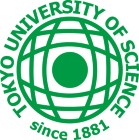
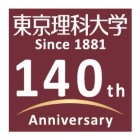
 Collection: Nature Index 2021 Asia Pacific
Collection: Nature Index 2021 Asia Pacific